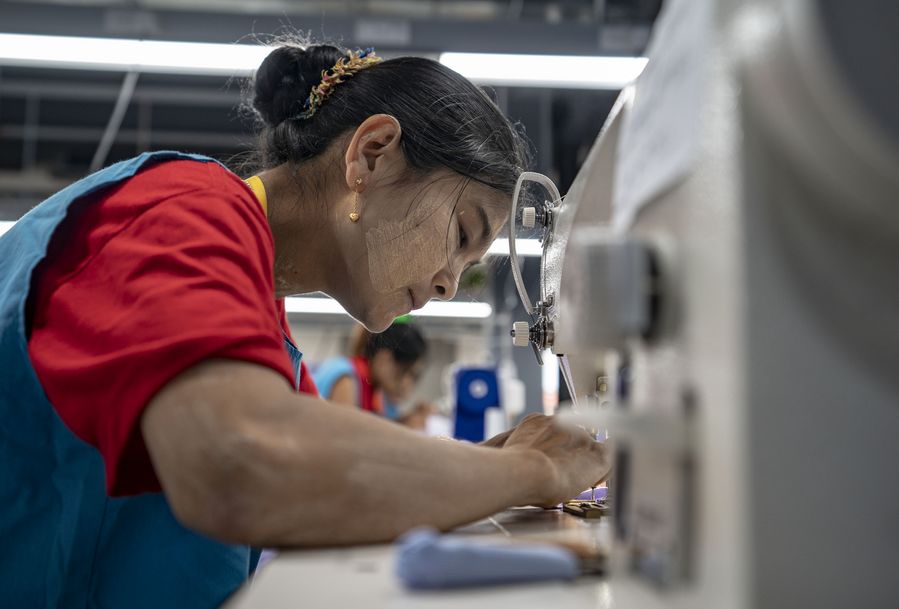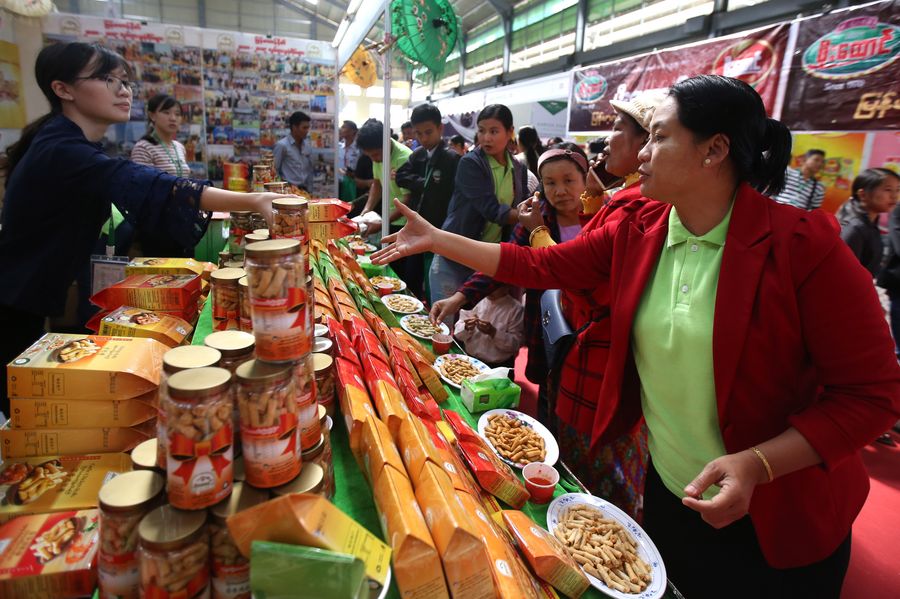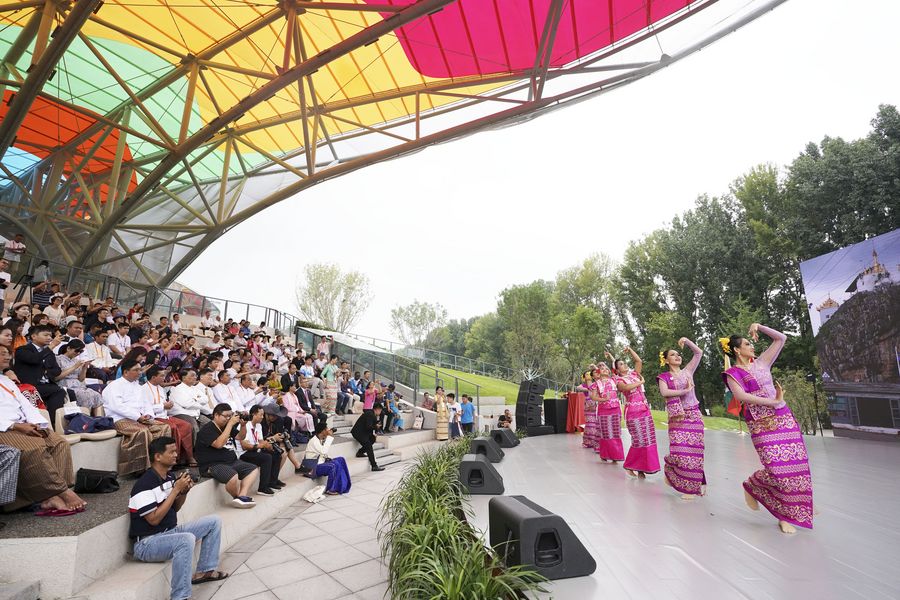
Myanmar and Chinese students play game together during the class break at Yinjing Primary School in Yinjing Village in Ruili, southwest China's Yunnan Province, March 8, 2019. (Xinhua/Qin Qing)
The comprehensive strategic cooperative partnership between the two brotherly neighbors, which highlights high-level political mutual trust, in-depth economic cooperation, close coordination on international and regional affairs, as well as robust people-to-people exchanges, stands as the most suitable footnote of "Paukphaw."
by Xinhua writer Jiang Li
BEIJING, Jan. 17 (Xinhua) -- "Paukphaw" has been a buzzword this week ahead of Chinese President Xi Jinping's state visit to Myanmar on Friday and Saturday.
Xi's visit to Myanmar is his first overseas trip in the new year, and is expected to open up a new era of the China-Myanmar fraternal friendship.
"Paukphaw," a Myanmar term that means "fraternal," has now been widely used to characterize the millennia-old relations between China and Myanmar. The birth of China-Myanmar "Paukphaw" fraternity was legendary. Over the millennia, every generation of the Chinese and Myanmar people has enriched the term with the feats of their times and contributed to the steadfast progress of the bilateral relationship.
Today, the comprehensive strategic cooperative partnership between the two brotherly neighbors, which highlights high-level political mutual trust, in-depth economic cooperation, close coordination on international and regional affairs, as well as robust people-to-people exchanges, stands as the most suitable footnote of "Paukphaw."

An employee from Myanmar works at a clothing company in China (Yunnan) Pilot Free Trade Zone (FTZ) Dehong Area in Dehong, southwest China's Yunnan Province, Nov. 4, 2019. (Xinhua/Jiang Wenyao)
As good neighbors and friends, China supports Myanmar's efforts to maintain peace and stability and achieve national development, and safeguard national sovereignty and reject foreign interference.
Bilateral economic cooperation has been both dynamic and substantial. For years, China has been Myanmar's largest trading partner and important source of foreign investment. The latest customs data show that China's trade with Myanmar expanded by 28.5 percent year on year in 2019 to about 17.71 billion U.S. dollars.
Myanmar, a country that has a strong and pressing need in such infrastructure as railroads, ports, electricity and telecommunications to jumpstart its economic take-off, has been an active and important partner in the China-proposed Belt and Road Initiative (BRI) from the very beginning.
The China-Myanmar Economic Corridor (CMEC) and other major cooperation programs like the Kyaukpyu Special Economic Zone have boosted Myanmar's employment and economic development, and greatly improved the wellbeing of the Myanmar people.
According to Myanmar's income and expenditure report in the 2019-2020 fiscal year, the CMEC, which has linked the under-developed and developed regions and contributed to a better use of the country's development resources, has fueled domestic transport and tourism services. As a result, the country's economic growth is expected to exceed 7 percent.

People visit the first Myanmar (Lashio)-China (Lincang) border economic and trade fair in Lashio, Myanmar, Nov. 21, 2019. (Photo by Haymhan Aung/Xinhua)
China's practical cooperation with Myanmar has also been mutually beneficial in nature, and the benefits have not been confined to economic categories.
Take the China-Myanmar oil and gas pipeline project for example. While China has imported crude oil and natural gas from the Southeast Asian country, the program has channeled 27 million dollars into a host of social-economic assistance programs in the fields of health, education, power, water and disaster relief.
Because of those programs, nearly 20,000 Myanmar boys and girls can now go to better schools, some 1.2 million local people are enjoying more reliable health care services, and many villagers living along the pipeline now have access to 24-hour electricity and safe drinking water.
Close people-to-people exchanges have always been a catalyst for more energetic practical cooperation. And the new year, which marks the 70th anniversary of China-Myanmar diplomatic ties, has seen some new development.

Visitors view artists performing during the "Myanmar Day" event at the Beijing International Horticultural Exhibition in Beijing, capital of China, Aug. 4, 2019. (Xinhua/Ju Huanzong)
On Tuesday, a new direct air route between China and Myanmar was launched. The two sides have designated 2020 as the China-Myanmar Year of Culture and Tourism.
China and Myanmar also have been closely working with each other on multilateral occasions, such as upholding the purpose and principles of the UN Charter, boosting their coordination within the framework of China-ASEAN cooperation, and promoting the Lancang-Mekong cooperation mechanism.
Ahead of his Myanmar trip, Xi published a signed article in three Myanmar newspapers, in which he said that as this year marks the 70th anniversary of bilateral diplomatic ties, "China-Myanmar relations stand at a new starting point."
At this new starting point, this generation of the Chinese and Myanmar people now hold in their hands the opportunity to give new meaning to the millennia-old "Paukphaw" friendship. ■



